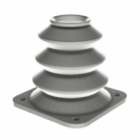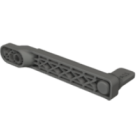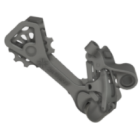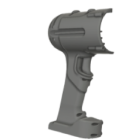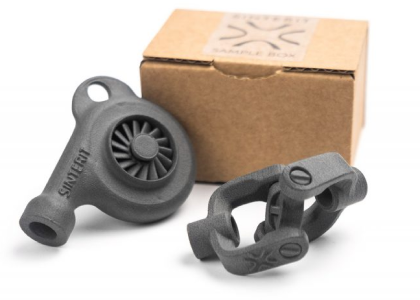What is 3D slicing in printing? Key to print quality and success
3D slicing is one of the most critical stages in the additive manufacturing process — it’s where digital design meets machine execution. If you’re asking “What is slicing in 3D printing?”, or wondering what happens between exporting a model and starting a print, slicing is the step that answers that question. It defines how your object will be printed, layer by layer, and directly determines the quality, strength, and success of the final part.
What is 3D slicing in 3D printing?
In simple terms, slicing is the process of converting a 3D model into thin horizontal layers and generating machine instructions — typically G-code — that tell the printer how to build each one. The model is “sliced” virtually along the Z-axis, and each slice becomes a separate instruction set for toolpath, extrusion, temperature, and movement.
So when we talk about what slicing means in 3D printing, we’re talking about translating geometry into behavior — from static mesh data to real-world physical motion. Without this step, a 3D printer has no way of interpreting a model file like STL or 3MF. Slicing bridges the gap between the digital and the physical.
How 3D slicing software translates your model into instructions
A slicing engine analyzes the 3D model, determines its boundaries, and calculates the optimal way to deposit material based on the printer’s specifications and user-defined settings. These settings include layer height, infill density, wall thickness, support structure generation, and travel speed, among others.
The slicing 3D model step also detects overhangs, bridges, and gaps — and decides where supports are needed. Once all layers are calculated and instructions generated, the slicer compiles everything into a printable file (G-code for FDM printers, or similar formats for SLA, SLS, or MJF systems).
Importantly, slicing is not a passive step. It offers deep control over how a part is printed — influencing:
- surface finish and resolution (through layer height and line width),
- part strength and internal structure (via infill patterns and shell settings),
- print time and material use (through optimization of paths and supports),
- print success or failure (based on proper support and adhesion strategies).
Even the same 3D model can produce dramatically different results depending on how it’s sliced.
How to choose the right slicing software
There are many slicing software options available — each suited to different printing technologies and use cases. For FDM, popular choices include Cura, PrusaSlicer, Bambu Studio, and Simplify3D. Resin-based systems use slicers like Lychee Slicer, PreForm (for Formlabs), or Chitubox. For powder-bed systems like SLS and MJF, slicers are typically proprietary — such as Sinterit Studio or HP SmartStream — and optimized for nesting and packing efficiency in a powdered environment.
The slicer you choose should match both your printer’s capabilities and your application needs. Some slicers are beginner-friendly and automated; others offer deep customization and machine-specific tuning.
Key slicing parameters that impact your print
While slicing involves many variables, some of the most impactful include:
- layer height – Determines surface smoothness and print time,
- infill pattern and density – Affects internal structure and weight,
- wall thickness (shells) – Controls strength and durability,
- support generation – Ensures overhangs and bridges are printed cleanly,
- speed and temperature settings – Balance quality with efficiency.
Mastering these parameters takes practice, but they are the core levers of print quality. A well-sliced model can turn a mediocre design into a perfect part — and a poorly sliced one can ruin even the best-designed geometry.
Why 3D slicing is essential for additive manufacturing
3D slicing is the step that makes 3D printing possible — it transforms a digital 3D model into a set of precise, executable instructions. Without slicing, a 3D printer has no concept of shape, motion, or material control. Understanding what slicing in 3D printing entails — and how to fine-tune it — is essential for achieving consistent, high-quality results. Whether you’re printing a simple bracket or a detailed prototype, success begins with the slicer.
Explore also
- What is the 3D printing process?
- 3D printing process step by step
- How to make a 3D model for printing?
- Understanding 3D print settings for better results
- The additive manufacturing process: how 3D printing builds layer by layer
- Printing 3D
- What is post-processing?
- Why do 3D prints fail?
Related categories




